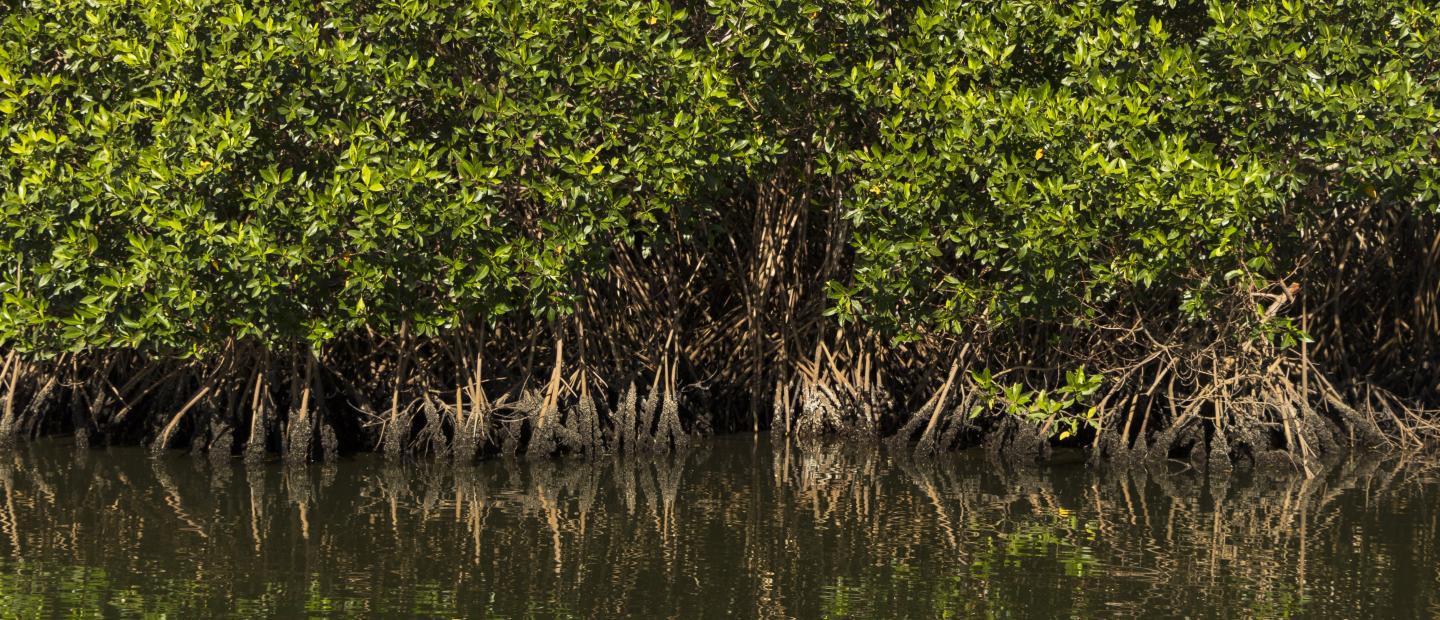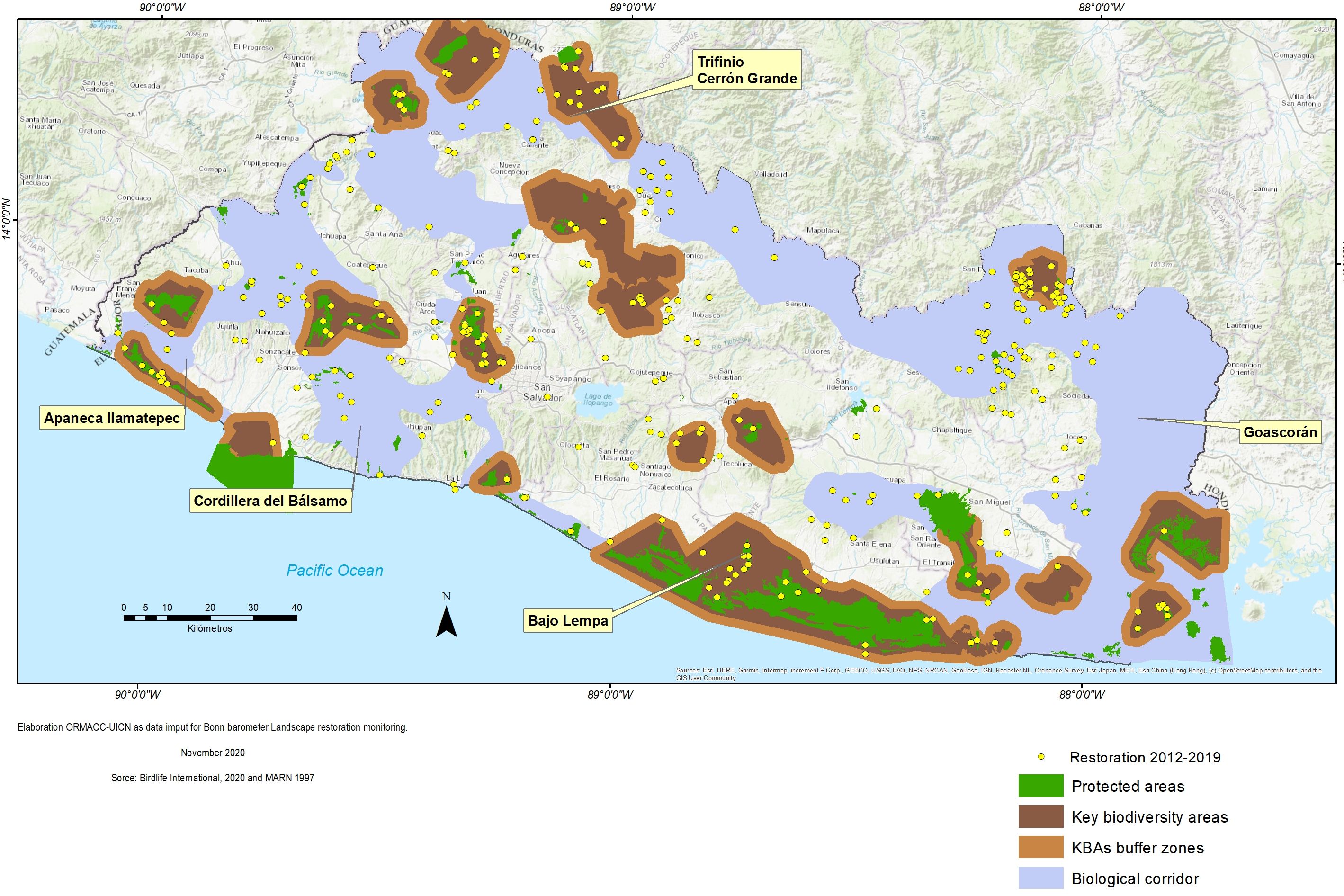Restoration Barometer: Reporting on Restoration Progress in El Salvador
Restoration Barometer: Reporting on Restoration Progress in El Salvador

El Salvador has experienced extensive land degradation over the last several decades, which has resulted in increased vulnerability to climate variability and extreme events. In 2012, El Salvador announced a pledge to the Bonn Challenge to restore 1 million hectares of degraded land in response to threats associated with land degradation and climate change. El Salvador applied the Restoration Barometer in 2017 to assess progress on restoration activities from 2012 to 2017 and again in 2020 to assess data from 2018 onwards.
The Restoration Barometer provides a framework of eight indicators to track and report landscape-scale action. They are grouped as “action” or “impact” indicators. The action indicators are: policies and institutional arrangements, funding, technical planning, and monitoring systems. The impact indicators are: area of land under restoration, climate, biodiversity, and economy. Countries have the flexibility to select the most relevant indicators or report on all eight, as well as to select the scale of reporting. El Salvador is tracking its process for action and impact indicators at the landscape scale. El Salvador reported 49,513 hectares under fourteen different intervention types for 2018. The top two intervention types were agroforestry and reforestation, accounting for 53 percent and 23 percent of restoration activities, respectively.
El Salvador’s Ministry of Environment and Natural Resources (MARN) applied the Restoration Barometer framework with the help of IUCN’s regional office. Monitoring with the Restoration Barometer enabled MARN to identify and report on a range of country-level restoration data. To collect data for measuring different Restoration Barometer indicators, MARN collaborated across government agencies and built relationships with external organizations.
MARN collected data for the Restoration Barometer’s action indicators related to policies, institutional arrangements, and funding through interviews with experts and desktop research. MARN collected data for indicators related to institutions and capacity assessments through a technical survey and detailed interviews with country level subject experts.
To measure the Restoration Barometer indicator related to land under restoration, MARN relied on data from government agencies and other country-level stakeholders. El Salvador’s National Program for Restoration of Ecosystems and Landscapes (PREP) and the National Forest Monitoring System assisted MARN in reporting on the area of land under restoration. PREP and the National Forest Monitoring System are national portals that collect data, conduct analyses, and generate results about hectares under restoration, project locations, and other relevant data. In addition to collecting data from these national platforms, MARN organized a series of workshops to validate the data with stakeholders from various sectors, departments, NGOs, and local organizations.
MARN drew on externally collected data to measure the Restoration Barometer indicator related to climate. MARN used the Winrock-IUCN Forest Landscape Restoration (FLR) Carbon Storage Calculator to estimate the climate impacts achieved by agroforestry, plantations and woodlots, natural regeneration, and mangrove restoration interventions and it used the FAO’s EX-Ante Carbon Balance Tool to assess the climate impacts achieved by good agricultural practices. To measure the Restoration Barometer’s biodiversity indicator, MARN used geographic information systems (GIS) to overlay maps of Key Biodiversity Areas (KBA), Protected Areas (PA) polygons, and biological corridor locations.
MARN found that the main advantage of the Barometer is being able to track pledge implementation at various scales and the flexibility to select the scale at which to report based on data availability. MARN was also able to use the Restoration Barometer to identify the impacts of interventions that related to multiple indicators. For example, MARN found that forest landscape restoration (FLR) actions contributed to both CO2 removals and biodiversity conservation. From 2016 to 2019, FLR activities – primarily agroforestry in degraded agricultural landscapes – resulted in the total accumulated removal of 1,508,714 more tons of CO2 than would have been removed by the landscape in a business-as-usual scenario without interventions. FLR also corresponded positively with high levels of biodiversity (see figure below). MARN can consistently follow the Restoration Barometer methodology to continue to monitor the relationships between FLR, CO2 removals, and biodiversity.
MARN found that the lack of available spatial data and lack of baseline data mapping capacity posed challenges in applying the Restoration Barometer. Although El Salvador has a national geospatial platform for tracking FLR implementation, only 40 percent of national FLR data has been recorded. Further, of the 49,513 hectares El Salvador reported to be under restoration, only 40 percent could be measured with data from geo-located project areas. A forthcoming enhanced Restoration Barometer portal will provide users with a wide set of tools they can use to generate spatial data to help fill this gap.


